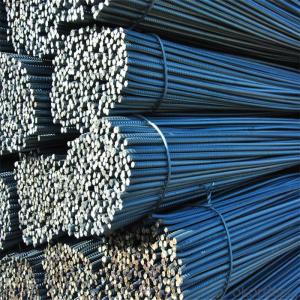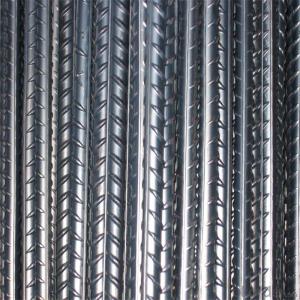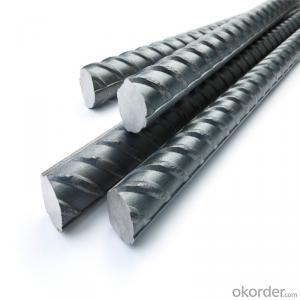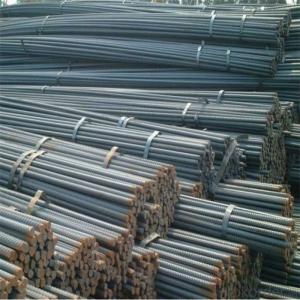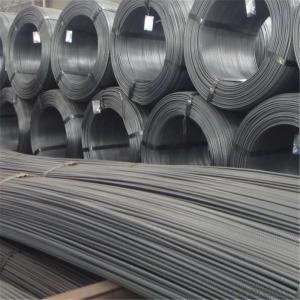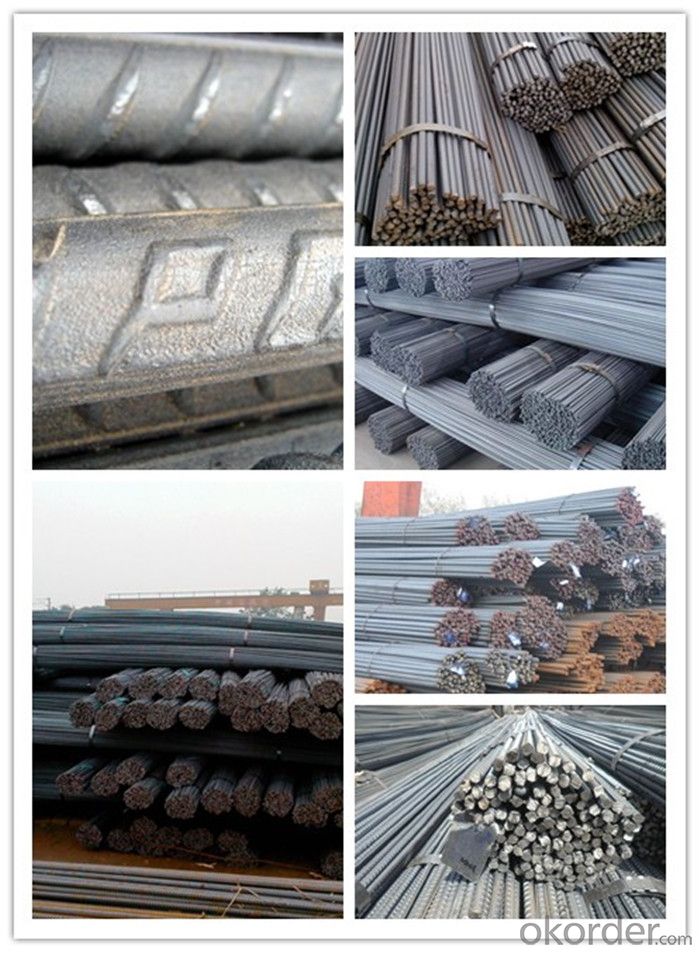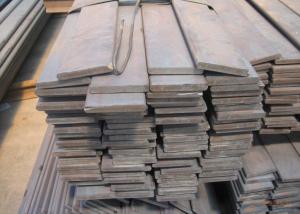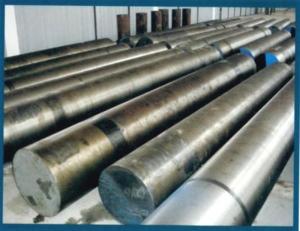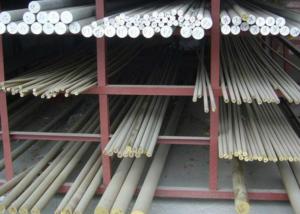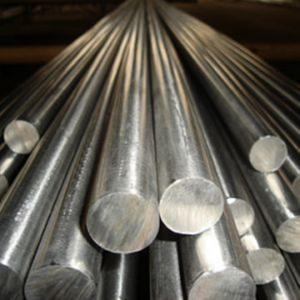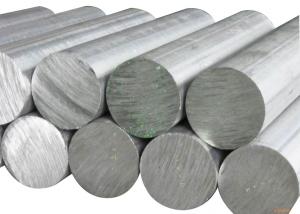Mild Deformed Steel Bar in All Sizes
- Loading Port:
- Tianjin
- Payment Terms:
- TT OR LC
- Min Order Qty:
- 180 m.t.
- Supply Capability:
- 500000 m.t./month
OKorder Service Pledge
OKorder Financial Service
You Might Also Like
Item specifice
Mild Deformed Steel Bar
Description of Mild Deformed Steel Bar
1, Diameter: 5.5mm-10mm Mild Deformed Steel Bar
10m- 40mm Mild Deformed Steel Bar
2, Length: 6m, 9m, 12m or customized
3, Standard: GB, ASTM, AISI, SAE, DIN, JIS, EN
OEM technology - send detailed technical parameters for accurate quotation.
2, Produce Process: smelt iron - EAF smelt billet - ESR smelt billet -
hot rolled or forged to get the steel round bar and plate
3, Heat Treatment: annealing, normalizing, tempering, quenching
4, Surface Treatment: Black
5, Quality Assurance: We accept third party inspection for all orders.
You can ask testing organizations such as SGS, BV, etc. to test our products before shipping.
Chemical Composition of Mild Deformed Steel Bar
Grade | Technical data of the original chemical composition(%) | |||||
Reinforcing steel bar HRB335 | C | Mn | Si | S | P | B |
≤0.25 | ≤1.60 | ≤0.80 | ≤0.045 | ≤0.045 | >0.0008 | |
Physics Capability | ||||||
Yield Strength(N/cm2) | Tensile Strength(N/cm2) | Elongation(%) | ||||
≥ 335 | ≥490 | ≥16 | ||||
Reinforcing steel bar HRB400 | C | Mn | Si | S | P | B |
≤0.25 | ≤0.16 | ≤0.80 | ≤0.045 | ≤0.045 | 0.04-0.12 | |
Physics Capability | ||||||
Yield Strength(N/cm2) | Tensile Strength(N/cm2) | Elongation(%) | ||||
≥ 400 | ≥ 570 | ≥ 14 | ||||
Products Show of Mild Deformed Steel Bar
Company Information
CNBM International Corporation is the most important trading platform of CNBM group.
Whith its advantages, CNBM International are mainly concentrate on Cement, Glass, Iron and Steel, Ceramics industries and devotes herself for supplying high qulity series of refractories as well as technical consultancies and logistics solutions.


F A Q
1, Your advantages?
professional products inquiry, products knowledge train (for agents), smooth goods delivery, excellent customer solution proposale
2, Test & Certificate?
SGS test is available, customer inspection before shipping is welcome, third party inspection is no problem
3, Factory or Trading Company?
CNBM is a trading company but we have so many protocol factories and CNBM works as a trading department of these factories. Also CNBM is the holding company of many factories.
4, Payment Terms?
30% TT as deposit and 70% before delivery.
Irrevocable L/C at sight.
5, Trading Terms?
EXW, FOB, CIF, FFR, CNF
6, After-sale Service?
CNBM provides the services and support you need for every step of our cooperation. We're the business partner you can trust.
For any problem, please kindly contact us at any your convenient time.
We'll reply you in our first priority within 24 hours.
- Q:What are the different forging techniques for special steel parts?
- To produce special steel parts, there are various forging techniques available, which depend on the desired shape, size, and properties of the final product. Some commonly used techniques for forging special steel parts include: 1. Utilizing open-die forging involves shaping the metal between flat dies or anvils. It is suitable for simpler shapes and provides flexibility in producing a wide range of sizes. 2. Closed-die forging, also known as impression-die forging, involves shaping the metal within a closed die that contains the desired shape and allows for higher precision. It is commonly used for producing complex and intricate shapes. 3. Upset forging involves compressing and shaping the metal by applying pressure to the ends of the workpiece. This technique is often used to create parts with increased diameter or reduced length, such as bolts and nails. 4. Ring rolling is a technique that shapes a cylindrical workpiece by applying pressure from rotating rolls. It is commonly used for producing seamless rings with enhanced strength and durability, for example, gears, bearings, and flanges. 5. Isothermal forging is performed by forging the metal at a constant temperature, usually within a specially designed furnace. This technique allows for precise control over the metallurgical properties of the final product, resulting in improved mechanical properties and reduced residual stress. 6. Precision forging, also known as near-net-shape forging, uses specially designed dies to produce parts with minimal finishing operations. It is commonly used for complex shapes and high-volume production, ensuring cost-effectiveness and dimensional accuracy. 7. Press forging involves shaping the metal by applying pressure through a mechanical or hydraulic press. It allows for precise control over the forging process and is often used for producing high-strength, large-sized components. Each of these forging techniques offers unique advantages and is suitable for different applications. The appropriate selection of the forging technique for special steel parts depends on factors such as the desired shape, size, strength, and cost-effectiveness of the final product.
- Q:What are the different applications of tool special steel?
- Tool special steel has various applications across industries such as automotive, aerospace, construction, and manufacturing. It is commonly used for making cutting tools, dies, molds, and components that require high strength, durability, and resistance to wear and corrosion. Additionally, tool special steel finds use in power transmission systems, machine parts, and even surgical instruments. Its versatility and ability to withstand extreme conditions make it a crucial material in many applications where precision and reliability are paramount.
- Q:How does special steel withstand extreme temperatures?
- Special steel is designed to withstand extreme temperatures due to its unique composition and manufacturing process. It contains a higher percentage of alloying elements, such as chromium, nickel, and molybdenum, which enhance its heat resistance properties. These alloys form a protective layer on the surface of the steel, preventing oxidation and corrosion at high temperatures. Additionally, special steel undergoes specific heat treatment methods, such as quenching and tempering, which further enhance its ability to withstand extreme temperatures without losing its strength and structural integrity.
- Q:What are the challenges in machining special steel alloys?
- Machining special steel alloys presents several challenges. These alloys are typically harder and more brittle than regular steel, making them more difficult to cut and shape. They also tend to generate higher heat during the machining process, increasing the risk of tool wear and thermal damage. Special steel alloys may also have complex microstructures and chemical compositions, which can result in uneven material removal and unpredictable machining behavior. Additionally, these alloys often have lower machinability ratings, requiring specialized cutting tools and techniques to achieve desired results. Overall, the challenges in machining special steel alloys lie in their hardness, heat generation, complex microstructures, and lower machinability, necessitating expertise and careful consideration during the machining process.
- Q:What are the limitations of using special steel in high-stress applications?
- There are several limitations to using special steel in high-stress applications. Firstly, special steel can be quite expensive compared to other materials. This can make it less feasible for certain projects or industries with budget constraints. Secondly, special steel may not always be readily available or easily sourced. This can lead to delays in production or construction timelines, which can be problematic in high-stress applications where time is of the essence. Additionally, special steel may have limitations in terms of its structural integrity. While it is generally stronger and more resistant to wear and tear compared to regular steel, it may still have certain limits in terms of load-bearing capacity. This means that in extremely high-stress applications, special steel may not be the most suitable choice. Moreover, special steel can be more difficult to work with compared to other materials. It may require specialized equipment or techniques for cutting, welding, or shaping, which can add complexity and cost to the manufacturing process. Lastly, special steel may have limitations in terms of its corrosion resistance. While it is generally more resistant to corrosion compared to regular steel, it may still be prone to rust or degradation if not properly maintained or exposed to harsh environments. This can be a concern in high-stress applications where the durability and longevity of the material are crucial. Overall, while special steel offers many benefits in high-stress applications, it is important to consider its limitations in terms of cost, availability, load-bearing capacity, workability, and corrosion resistance. These factors should be carefully evaluated to determine the most suitable material for a specific high-stress application.
- Q:How does special steel contribute to improved product aesthetics?
- Special steel contributes to improved product aesthetics in several ways. Firstly, special steel can be formulated to have a higher level of purity, resulting in a cleaner and more polished appearance. This enhances the overall visual appeal of the product. Additionally, special steel can be engineered to have unique surface finishes, such as brushed or mirror-like effects, which can add a sophisticated and luxurious touch to the product design. Furthermore, special steel can be shaped and molded with precision, allowing for intricate and intricate designs that enhance the aesthetics of the product. Overall, the use of special steel in manufacturing helps to elevate the visual appeal of products, making them more attractive and visually pleasing to consumers.
- Q:What are the different heat treatment defects in special steel?
- During the heat treatment process of special steel, various defects can occur. Some of the most frequently encountered defects are as follows: 1. Decarburization: This defect arises when the steel's outer layers lose carbon due to exposure to high temperatures in an environment rich in oxygen. The consequence of decarburization is reduced hardness and strength in the treated steel. 2. Quench cracking: Also known as cracking during quenching, this defect emerges when the steel undergoes rapid cooling subsequent to heating. The differential cooling rates can induce internal stresses, resulting in cracks within the material. 3. Distortion: Distortion refers to alterations in the shape or dimensions of the steel during the heat treatment process. It can be caused by uneven heating or cooling, inadequate fixturing, or improper quenching techniques. 4. Soft spots: Soft spots are localized areas of reduced hardness in the treated steel. These spots can occur due to insufficient heating or improper quenching, leading to diminished mechanical strength in those regions. 5. Overheating: Overheating is a defect that occurs when the steel is subjected to excessively high temperatures during the heat treatment process. This can lead to grain growth, reduced toughness, and overall decreased material properties. 6. Case hardening problems: Special steels often undergo case hardening processes, such as carburizing or nitriding, to create a hardened outer layer. However, several defects can arise during these processes, including inadequate or excessive hardening, poor case depth, or uneven distribution of hardness. 7. Residual stresses: Residual stresses are internal stresses that persist in the steel after the heat treatment process. If not properly controlled, these stresses can cause dimensional instability, warping, or even cracking. To prevent or minimize these heat treatment defects, it is crucial to adhere to proper heat treatment procedures. This includes precise temperature control, appropriate cooling rates, and suitable fixturing techniques. Furthermore, the use of high-quality heat treatment equipment, close monitoring of the process, and thorough inspections can aid in detecting and rectifying any potential defects in special steel.
- Q:What is the impact of manganese in special steel alloys?
- The presence of manganese in special steel alloys is crucial as it greatly affects their properties and performance. These alloys, also referred to as high-strength or low-alloy steels, are specifically designed to possess improved mechanical properties, including increased strength, durability, and resistance to wear and corrosion. In order to achieve these desired characteristics, manganese, along with other alloying elements such as nickel, chromium, and molybdenum, is incorporated into the steel. One of the major impacts of manganese in special steel alloys lies in its capacity to enhance the hardenability of the steel. During the solidification and cooling process, manganese promotes the formation of fine-grained structures, which ultimately leads to improved strength and toughness. This particular property is of utmost importance in applications where the steel needs to endure heavy loads, shocks, or extreme temperatures. Moreover, manganese aids in reducing the brittleness of the steel and improving its weldability. By forming a solid solution with iron, it prevents the formation of detrimental iron sulfides, which can cause brittleness and hinder the steel's weldability. Consequently, manganese becomes an essential element in steels utilized in various industries such as fabrication, construction, and automotive, where welding is a common practice. In addition, manganese contributes to the steel's resistance against corrosion and oxidation. It creates a protective oxide layer on the surface of the steel, effectively preventing the intrusion of oxygen and moisture. This particular property proves to be highly advantageous in industries where the steel is exposed to harsh environments or corrosive substances, such as marine applications, chemical processing plants, or oil and gas refineries. Furthermore, manganese enhances the hardenability and wear resistance of the steel, making it suitable for the production of tools, machinery parts, and cutting edges. It heightens the steel's ability to undergo heat treatment, thus enabling the attainment of desired hardness and strength through processes like quenching and tempering. In conclusion, the inclusion of manganese in special steel alloys significantly enhances their hardenability, weldability, toughness, corrosion resistance, and wear resistance. Its addition enables the production of high-strength and durable materials capable of withstanding demanding applications and environments.
- Q:How does special steel contribute to the efficiency of industrial equipment?
- Several factors contribute to the efficiency of industrial equipment, with special steel playing a crucial role. Firstly, the use of special steel alloys offers superior strength and hardness properties compared to regular steel. This enables the construction of more durable and robust equipment, reducing the frequency of repairs or replacements. Consequently, the overall efficiency of the equipment is improved. In addition, special steel alloys demonstrate excellent resistance to heat and corrosion, making them ideal for use in high-temperature or corrosive environments. This ensures that the equipment can operate reliably, even in challenging settings, without compromising performance or safety. Moreover, special steel alloys provide improved machinability, allowing for more precise manufacturing of industrial equipment components. This precision ensures that the equipment is built to exact specifications, resulting in enhanced overall performance and efficiency. Furthermore, special steel alloys can be tailored to possess specific characteristics, such as high conductivity or magnetic properties. This makes them ideal for applications requiring electrical conductivity or magnetism. By customizing special steel, industrial equipment can be developed to meet specific needs, maximizing efficiency and effectiveness. Overall, the utilization of special steel in industrial equipment significantly enhances its efficiency. Through enhanced strength, durability, heat and corrosion resistance, improved machinability, and customization options, the lifespan, performance, reliability, and safety of the equipment are all improved. Consequently, this leads to enhanced operational efficiency and productivity in industrial settings.
- Q:How does special steel contribute to national security?
- Special steel contributes to national security in several ways. Firstly, it is used in the manufacturing of military equipment and weapons. Special steel possesses high strength, toughness, and resistance to corrosion, making it ideal for producing tanks, armored vehicles, submarines, and aircraft carriers. The use of special steel in military applications ensures the durability and reliability of these crucial defense systems, ultimately enhancing national security. Secondly, special steel is used in the construction of critical infrastructure. It is employed in the fabrication of bridges, tunnels, and buildings that are key to the functioning and security of a nation. Special steel's superior strength and resistance to extreme conditions make it an essential material for structures that need to withstand natural disasters, terrorist attacks, or other security threats. By utilizing special steel in infrastructure projects, a nation can bolster its security and protect its citizens. Furthermore, special steel plays a vital role in the energy sector, particularly in nuclear power plants. Special steel alloys are used in the construction of reactor vessels and other components that are subjected to high temperatures and pressures. The use of special steel ensures the integrity and safety of these critical facilities, preventing potential nuclear accidents that could pose a significant threat to national security. Lastly, special steel contributes to national security by supporting the defense industry and fostering technological advancements. The research and development of special steel alloys often lead to breakthroughs in material engineering, which can have broader applications beyond defense. These advancements can drive innovation in other sectors, such as aerospace, automotive, and energy, thereby enhancing a nation's overall technological capabilities and economic competitiveness. In conclusion, special steel's contribution to national security is multifaceted. Its use in military equipment, critical infrastructure, nuclear power plants, and technological advancements all play a crucial role in safeguarding a nation's interests, protecting its citizens, and maintaining its strategic advantage in an increasingly volatile world.
1. Manufacturer Overview |
|
|---|---|
| Location | |
| Year Established | |
| Annual Output Value | |
| Main Markets | |
| Company Certifications | |
2. Manufacturer Certificates |
|
|---|---|
| a) Certification Name | |
| Range | |
| Reference | |
| Validity Period | |
3. Manufacturer Capability |
|
|---|---|
| a)Trade Capacity | |
| Nearest Port | |
| Export Percentage | |
| No.of Employees in Trade Department | |
| Language Spoken: | |
| b)Factory Information | |
| Factory Size: | |
| No. of Production Lines | |
| Contract Manufacturing | |
| Product Price Range | |
Send your message to us
Mild Deformed Steel Bar in All Sizes
- Loading Port:
- Tianjin
- Payment Terms:
- TT OR LC
- Min Order Qty:
- 180 m.t.
- Supply Capability:
- 500000 m.t./month
OKorder Service Pledge
OKorder Financial Service
Similar products
New products
Hot products
Hot Searches
Related keywords
